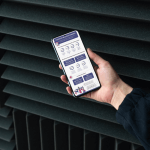Are you looking to improve your omnichannel commerce strategy and give your customers a seamless shopping experience? Then you may want to consider using headless commerce and a Progressive Web Application (PWA) front-end. Headless commerce and PWAs are two relatively new technologies that are gaining popularity in the world of e-commerce. In this article, we’ll explain what these technologies are and how they can benefit your business. Whether you’re just getting started with e-commerce or you’re a seasoned pro, this article is for you. Let’s dive in!
Some definitions: Headless Commerce, PWA, front-ends, omnichannel commerce…
Headless commerce is a type of e-commerce setup in which the frontend of the website, where customers interact and make purchases, is decoupled from the backend systems that manage the fulfillment and processing of orders. This allows for greater flexibility in terms of the design and functionality of the frontend, as well as the integration of the e-commerce platform with other systems and services.
Progressive web apps (PWAs) are web applications that are designed to offer a user experience that is similar to that of a native mobile app. They combine the best of both the web and mobile worlds, offering the speed and convenience of a web page with the capabilities and functionality of a mobile app. PWAs are built using modern web technologies, such as HTML, CSS, and JavaScript, and can be accessed through a web browser just like any other website.
An e-commerce front-end refers to the part of an online store that customers interact with when they visit the site. This typically includes the website’s user interface, design, and layout, as well as the various features and functionalities that enable customers to browse and search for products, add them to their cart, and complete the checkout process. The front-end of an e-commerce site is typically built using web technologies such as HTML, CSS, and JavaScript, and is designed to provide a seamless and intuitive shopping experience for customers. It is the face of the online store, and plays a crucial role in attracting and retaining customers.
Omnichannel commerce is a type of e-commerce that provides customers with a seamless and consistent shopping experience across multiple channels and devices. This can include online and offline channels, such as a company’s website, mobile app, brick-and-mortar stores, and even social media platforms. With omnichannel commerce, customers can shop and make purchases using the channel of their choice, and their experience will be consistent and cohesive no matter what channel they use. This can involve things like a unified view of a customer’s shopping cart and order history across channels, as well as the ability to start a purchase on one channel and complete it on another. The goal of omnichannel commerce is to provide customers with the most convenient and personalized shopping experience possible.

Did you know M-Commerce will be dominating in the coming years?
Headless Commerce to boost your omnichannel commerce strategy
Now that you know what everything is, how does it all fit together? Let’s start with how headless commerce can be useful for an omnichannel commerce strategy.
Headless commerce can provide a number of benefits to an omnichannel commerce strategy. Because the frontend of a headless commerce setup is decoupled from the backend systems, it is easier to integrate the e-commerce platform with other channels and devices. This can make it possible to offer a more seamless and consistent experience across channels, as customers can easily move between different channels and devices without losing their place or having to repeat actions.
In addition, headless commerce allows for greater flexibility and customization of the frontend. This can be useful in creating a unique and engaging user experience that is tailored to the specific needs and preferences of each individual customer. This can help to increase customer satisfaction and loyalty, and ultimately drive more sales.
Furthermore, headless commerce can improve the scalability and performance of an omnichannel commerce strategy. Because the frontend and backend are separate, they can be scaled independently to meet the needs of the business. This can make it easier to handle large volumes of traffic and transactions, and ensure that the online store can continue to operate smoothly and efficiently as it grows.
So, to recap, headless commerce can boost an omnichannel commerce strategy by ensuring:
- Improved integration with other channels and devices, enabling a more seamless and consistent shopping experience across channels
- Greater flexibility and customization of the frontend, allowing for a unique and engaging user experience that is tailored to each individual customer
- Improved scalability and performance, making it easier to handle large volumes of traffic and transactions as the business grows
- The ability to leverage the latest web technologies and innovations, such as PWAs, to provide customers with a modern and convenient shopping experience.
Speaking of PWAs, let’s take a look at their impact on an omnichannel strategy.

PWA frontends to take your omnichannel commerce strategy to the next level
Progressive web app (PWA) frontends can provide a number of benefits to omnichannel commerce strategies. Here are a few ways that PWAs can enhance an omnichannel approach.
PWAs provide a user experience that is similar to that of a native mobile app, but without the need to download and install anything from an app store. This can make it easier for customers to access and use the online store, and can help to increase engagement and conversion rates. They can also be installed on a user’s device, allowing for offline access and the ability to receive push notifications. This can help to keep customers informed and engaged, and can provide a more convenient and personalized shopping experience.
PWAs are built using modern web technologies, which can enable the use of advanced features and functionality, such as real-time updates, background synchronization, and the ability to access device features like the camera and location services. This can help to enhance the customer experience and provide additional value to customers.
They can also be used to enhance the in-store buying experience by providing additional information, features, and functionality to customers while they are in the store. For example, a PWA could be used to provide real-time product availability, personalized product recommendations, or the ability to access a customer’s shopping cart and order history. Additionally, with a barcode reader directly in the web app, for example, a customer would be able to view all the product details, including available sizes and colour, fabric composition, warranty information and more.
Because PWAs are web-based, they can be easily integrated with other channels and devices as part of an omnichannel strategy. This can enable customers to move seamlessly between different channels and devices, and can help to create a more cohesive and consistent shopping experience.

So, how can I implement a Headless architecture and PWA front-end into my omnichannel commerce strategy?
Implementing a headless architecture and PWA frontend into an omnichannel commerce strategy can involve several steps, which may vary depending on the specific needs and requirements of your business. Here is a general outline of the steps that you might take to implement a headless PWA frontend:
- First, determine the specific requirements and goals for the omnichannel strategy, including the channels and devices that will be supported, the features and functionality that will be provided, and the target audience and customer experience that will be delivered.
- Next, select an e-commerce platform that supports a headless architecture and can be easily integrated with PWAs. This platform should provide robust and scalable backend systems for managing orders, products, and customers, as well as APIs and other tools for connecting the frontend and backend.
- Develop the PWA frontend using modern web technologies, such as HTML, CSS, and JavaScript. This frontend should be designed to provide a user experience that is consistent with the overall omnichannel strategy, and should be optimized for performance, accessibility, and engagement. Ideally, you’d want to work with a Front-end-as-a-Service provider like Front-Commerce. They’ll know and offer the best possible PWA front-end to suit your needs.
- Integrate the PWA frontend with the e-commerce platform’s backend systems using APIs and other tools. This should enable the frontend to access and manipulate data and actions related to orders, products, and customers, and should support the desired features and functionality of the omnichannel strategy.
- Test and deploy the PWA frontend, making sure to thoroughly test all aspects of the user experience, performance, and functionality. This may involve conducting user research, performance evaluations, and other forms of testing to ensure that the frontend is ready for production.
- Monitor and maintain the PWA frontend and the omnichannel strategy, including tracking metrics such as user engagement, conversion rates, and customer satisfaction. This can involve conducting regular audits and updates to the frontend and the underlying systems, as well as making any necessary adjustments to the omnichannel strategy based on feedback and performance data.
Overall, implementing a headless architecture and PWA frontend into an omnichannel commerce strategy will involve a combination of planning, development, testing, and optimization. It will require a deep understanding of both the technical aspects of e-commerce and the needs and preferences of your customers. By following a step-by-step approach, you can successfully implement a headless architecture and PWA frontend and take your omnichannel strategy to the next level.
